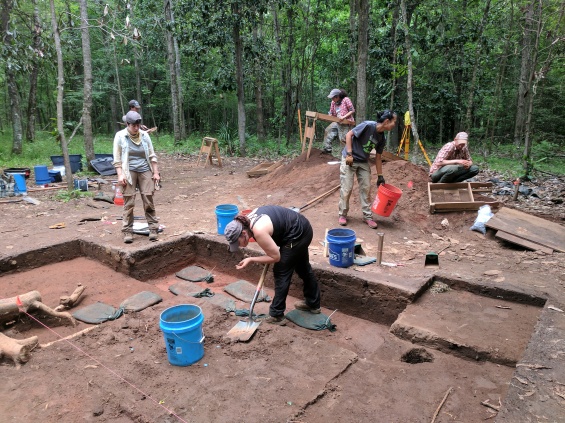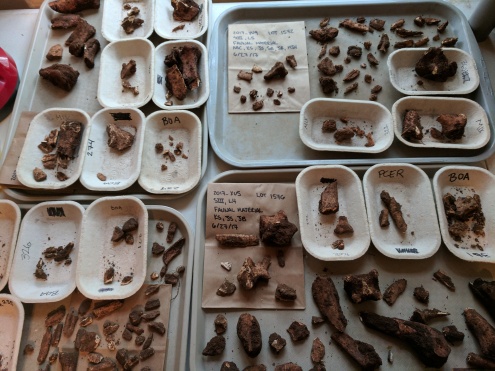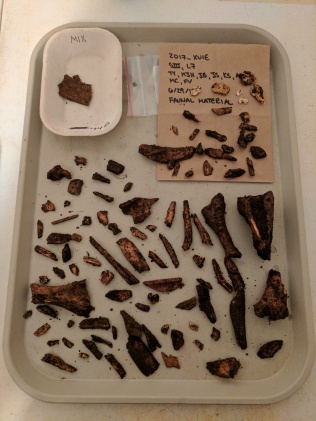As we are getting ready to begin our fifth and final week of field work out at Singer-Moye, we have continued to excavate into the dense, rich midden deposit in the area we have been investigating. We have been finding an increase in both the amount and density of artifacts. This has ranged from daub (clay that once adhered to structures) to beautifully decorated ceramics sherds, mica, chert, and a high amount of faunal material (animal bone and shell).

The 2017 excavation block. Darker brown soils are rich in artifacts, including animal bone.
Through these rich deposits, Singer-Moye offers an opportunity to help better understand the past behaviors of the people who once lived at and visited this site. This includes learning more about the subsistence practices of these people.
Learning more about subsistence practices in this region of Georgia can be very tricky as the soil in this area is very acidic. Because of this, organic material – like animal bone – often does not preserve very well. However, due to how rich the deposits are at Singer-Moye and how much organic material is in the midden deposits, this helps to make the soil less acidic and allows for better organic preservation than what there would normally be. This provides us with a rare chance to discuss faunal use not just at Singer-Moye, but more broadly in this region and time period. This includes what animals people would have been hunting, eating, and exploiting, as well as the kinds of activities that would have been associated with these practices. These are some of the questions I am working on addressing with my research here at the site by studying and analyzing this rich amount of faunal material.

A selection of faunal material from various contexts laid out to dry in the lab.
The deeper that we have been excavating in the midden deposit, the larger both the amounts and size of animal bone have been. The kinds of animal bone that we have been recovering has included white-tailed deer, bird, turtle, and smaller mammals, as well as shell from bivalves. We have also found both burned and unburned bone, as well as bone that has evidence of cut marks and being split. This helps to demonstrate possible changes in how people were processing animals or also possibly changes in how people were disposing of their refuse through time. This can help further our understanding of how people were living at the site and the kinds of activities they were doing throughout the site’s time of occupation.
Please make sure to keep checking back for future updates and information about the ongoing faunal analysis here at Singer-Moye.
– Kimi Swisher


